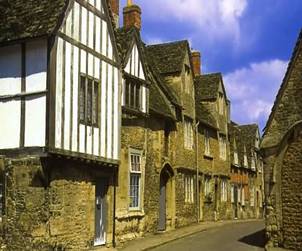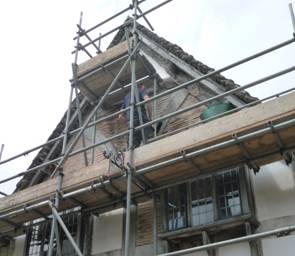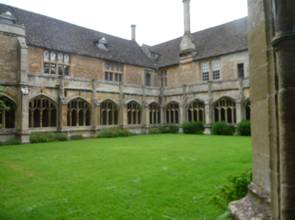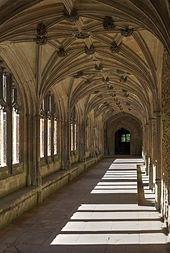Visit Reports
Lacock Abbey, Fox Talbot Museum and Village June 30th 2014
Lacock Abbey, dedicated to St Mary and St Bernard, was founded early in the 13th Century by the widowed Lady Ela the Countess of Salisbury. Her late husband was an illegitimate son of King Henry II. The Abbey prospered as a result of the sheep on her rich farmlands, generating sufficient income from the thriving wool market. By 1086, Lacock is mentioned in the Domesday Book - a population of 180 and featured 2 mills and a vineyard.
Following the Dissolution of the Monasteries in the mid-16th century, Henry VIII of England sold the Abbey to Sir William Sharington, who demolished the abbey church and, in 1539, converted it into a house. Few alterations were made and the chapter house and cloisters survived through the next 800 years.
Lacock Abbey and the surrounding village were given to the National Trust in 1944 and is a tourist attraction with the expected small
shops and eating places; the 200 year old Red Lion serves super lunches. Many of the employed people seemed to live outside the village.
The lime-washed half-timbered and stone houses are typical of the Cotswolds. The properties date from the 13th and 18th centuries and
there has been no major building here in the last 200 years, so it is a village trapped in time. The village must require a rolling plan
of skilled restoration and money.


The Abbey houses the William Henry Fox Talbot Museum devoted to Talbot's pioneering work in photography and the original
photograph of the oriel window he developed. Our visit coincided with the special displays celebrating 175 years of photography at L
acock. In 1839 Fox Talbot, former abbey owner and inventor, shared the first photographic negative with the world by chemical means.
Talbot and Daguerre were working with the heliograph at the same time. Thomas Wedgewood was working on impressions of leaves and flowers
to use on his pottery.
The Abbey as a film set
As a visitor it is difficult to take a photo without a parked car but the village is used as a film and television set, notably for
the 1995 BBC production of Pride and Prejudice and the 2007 BBC production of Cranford. It has also made brief appearances in three of
the Harry Potter films. Most recently, in the spring of 2012, it was a filming location of the fantasy adventure movie Mariah Mundi and
the Midas Box, which is scheduled for release in 2014.
When we visited we were lucky to see a large number of people working - removal vans full of generators, flood lights, wooden props such as "stone" arches and pillars etc; this was the start of a few days BBC filming of a series of Hilary Mantel's Wolf Hall for 2015 and possibly, the sequel Bring up the Bodies.
Cynthia Hayhurst June 2014


